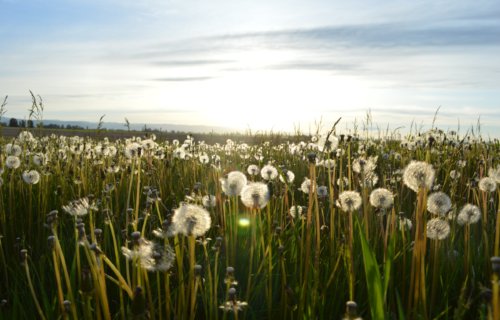MUNICH, Germany — After a year in coronavirus isolation, hope appears to be arriving just in time for spring. As millions receive their COVID-19 vaccine, many are planning to take advantage of the rising temperatures. Unfortunately, a new study finds the virus may also be making a comeback as seasonal pollen levels increase as well. Researchers at the Technical University of Munich (TUM) warn COVID infection rates rise as airborne pollen concentrations go up in the spring.
A massive international study, involving 130 locations in 31 countries on five continents, reveals 2020’s outbreak of coronavirus in the Northern Hemisphere appears to have a link to the annual tree pollen season. Led by study first author Athanasios Damialis, 154 researchers examined information on pollen concentrations, weather conditions, and COVID infections on a day-to-day basis.
Their results find that airborne pollen levels can account for nearly half (44%) of the changes in daily COVID infection rates. Weather conditions like humidity and air temperature also seem to play a role.
Before countries instituted widespread lockdown policies, infection rates increased by four percent for every 100 grains of pollen per cubic meter. In some German cities, researchers note pollen concentrations reached as high as 500 grains per cubic meter. This spike led to an overall increase in COVID infections of more than 20 percent on certain days.
For places going into lockdown early in the pandemic, the study finds infections rates were about half as high with the same levels of pollen in the air.
Why does pollen make you more vulnerable to COVID-19?
Study authors say high pollen counts weaken the immune system’s response to viruses which cause coughs and colds. When a virus enters the body, human cells send out “messenger” proteins (antiviral interferons) which alert their neighboring cells to increase antiviral defenses. This triggers an inflammation response which helps fight off the virus. COVID-19 is no different and the immune system does the same thing if SARS-CoV-2 enters the body.
When pollen is in the air however, patients breathe these particles in too. The pollen interferes with the body’s ability to generate antiviral interferons. The healthy inflammation response also suffers as a result.
Researchers say on days when pollen counts are high, the public is at risk for higher numbers of respiratory illnesses. They add that this is still the case whether someone is allergic to pollen or not.
“You cannot avoid exposure to airborne pollen,” says study author Stefanie Gilles in a university release. “People in high-risk groups should, therefore, be informed that high levels of airborne pollen concentrations lead to an increased susceptibility to viral respiratory tract infections.”
“When studying the spread of SARS-CoV-2, environmental factors such as pollen must be taken into account. Increased awareness of these effects are an important step in preventing and mitigating the impact of Covid-19,” Damialis adds.
The team recommends that people at high-risk for contracting COVID-19 continue wearing a particle-filtering mask this spring on days where pollen levels are high.
The study appears in the Proceedings of the National Academy of Sciences.
